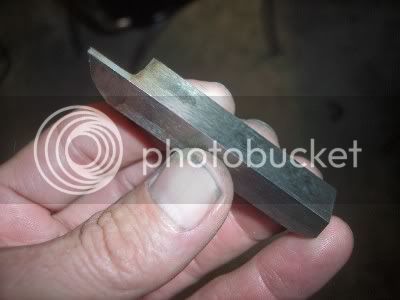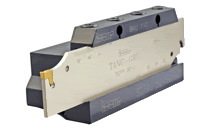rake60
Well-Known Member
- Joined
- Jul 8, 2007
- Messages
- 4,756
- Reaction score
- 124
A brazed tool bit or an index-able inset, the grade of carbide should
match the application.
Grade C2 is a hard carbide. It works very well when cutting cast
iron or any other non-ferrous metals. Use it on steel and it will most
likely chip the end off the tool.
Grade C6 is a softer but tougher carbide. It works very well on
steel, but lacks the abrasion resistance required for cutting cast iron or
the other non-ferrous metals. If you use a C6 on non-ferrous material
the cutting edge will wear away quickly.
Not to say you CAN'T use a C6 to cut cast iron. Of course you can!
But using the right grade for the material will make your tools or inserts
cut better and last longer.
General rule of thumb, Harder = Wear Resistance
Softer = Tougher
match the application.
Grade C2 is a hard carbide. It works very well when cutting cast
iron or any other non-ferrous metals. Use it on steel and it will most
likely chip the end off the tool.
Grade C6 is a softer but tougher carbide. It works very well on
steel, but lacks the abrasion resistance required for cutting cast iron or
the other non-ferrous metals. If you use a C6 on non-ferrous material
the cutting edge will wear away quickly.
Not to say you CAN'T use a C6 to cut cast iron. Of course you can!
But using the right grade for the material will make your tools or inserts
cut better and last longer.
General rule of thumb, Harder = Wear Resistance
Softer = Tougher










